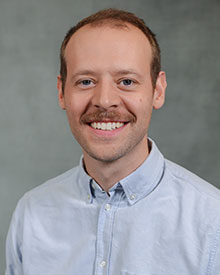MARAC 2023 Keynote Speaker
Brandon Marshall
We are happy to announce that this year's keynote speaker is Dr. Brandon Marshall of the University of Nebraska, Kearny!

The Midwestern O Star VES 735
Abstract
Only 3-4% of galactic O stars are observed to display the emission features representative of the OBe phenomenon, compared to Galactic B stars, which display these characteristics in 25-35% of B0 and B1 stars. We present new observations of the high-mass O star, VES 735, which confirms its classification as one of these rare emission stars. These are its first recorded observations that display strong spectroscopic variations in nearly 30 years of monitoring, with the H⍺ profile exhibiting a tenfold increase in emission compared to observations taken between 1996 and 2014 and variations which show episodes of in-flowing and out-flowing material. These observations, coupled with photometric variations in the visible and infrared show behavior that is consistent with the mass reservoir effect for viscous decretion disks. We propose that in 2015, VES 735 began an approximately 3-year event in which mass was being injected into the circumstellar environment followed by re-accretion towards the star. We also find evidence that the re-accretion may have been interrupted with another, smaller, mass-injection event based on observations in 2022 and 2023. Observational cadences ranging from hours to months show no evidence that VES 735 is part of a binary system, making it an ideal candidate for future observations to further investigate the evolution of high-mass stars and the OBe phenomenon as it pertains to their circumstellar environment.
Speaker Bio
Dr. Marshall’s primary research expertise is in the field of observational infrared astronomy as applied to the study of high-mass stars and star formation. He is particularly interested in the role that accretion disks play in the formation and evolution of high-mass stars and the influences that these types of stars have on the interstellar medium in producing new generations of stars via radiation driven implosion. He received his Ph.D. in Astrophysics from Iowa State University before joining the faculty at University of Nebraska at Kearney in 2019.